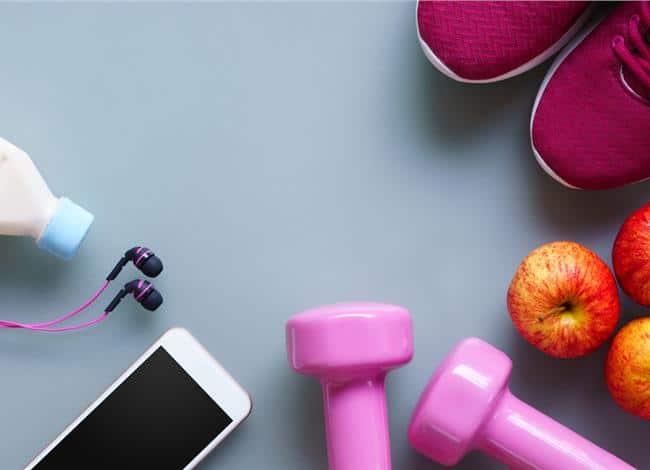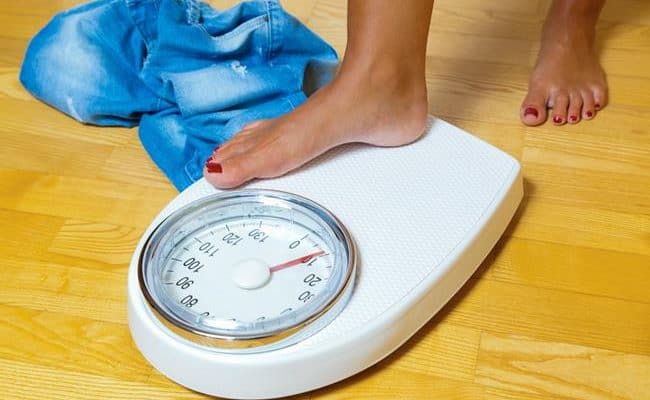
Whether it’s for your health, a vacation or celebration coming up, getting back on track from the holidays or a New Year’s resolution, fast weight loss is a goal for many of us. There are many supplements, weight loss programs or fitness apps you can choose from to help you in your weight loss efforts.
How do you know what way is the fastest and healthiest way to lose fat? It can be hard to tell. Weight loss can happen from different methods; there isn’t one magical way to lose weight.
However, what is important to keep in mind for fast weight loss is not to sacrifice healthy choices in place of rapid weight loss.
For example, following a very low calorie diet can result in quick weight loss, but as soon as you get off this diet weight is likely to come right back on.
It can also negatively impact your metabolism when you go on a very low-calorie diet, and you could be losing muscle mass.
Cutting out whole food groups or only eating a small selection of a few foods may result in quick weight loss, but this diet is unbalanced and unsustainable.
Fueling your body with nutrients instead of feeling starved is important for overall health and promoting sustainable fat loss.
4 Ways to Burn Fat Fast
These tips below can help you lose fat mass fast and are also sustainable practices that support your overall health.
1. Cut out the sugar
No matter what type of diet you are on paleo, vegan, Mediterranean, etc., cutting out sugar is an important aspect for any healthy diet pattern.
Refined sweeteners are simple to break down and get released into the blood stream soon after eating or drinking. This causes a rise in blood sugar which in turn triggers a rise in insulin levels.
Insulin is needed to bring sugar into body cells for energy or storage, and insulin also promotes fat storage.
Therefore, cutting out foods and drinks that are high in sugar like sweetened beverages, candy, sweets, sweetened cereal, white bread, crackers and packaged snacks is a key first step for weight loss.
Cutting out sweetened beverages (soda, juice, sweet tea, etc.) is especially important for weight loss as some studies (1) have shown sugar sweetened beverages consumption to be associated with obesity.
Higher protein diet
A higher protein diet (around 30% calories from protein) may be beneficial for weight and appetite regulation. A 2005 study (2) found an increase from 15-30% calories from protein helped participants control calorie intake and may help with weight loss.
Studies have shown weight loss can happen with various amounts of fat, protein and carbohydrate intake.
However, eating a higher protein diet, around 30% of calories from protein, may help promote fat loss and keep muscle mass.
A 2002 study (3) had participants on either a diet consisting of 28% protein, 42% carbohydrates, 28% fat or 16% protein, 55% carbohydrate and 26% fat.
Both diets consisted of 1,600 calories and participants were on either diet for 8 weeks. Both groups had improvements in cardiovascular disease risk and had weight loss.
However, the higher protein group had greater reductions in total and abdominal fat.
A common misconception for a higher protein diet for weight loss is you can only eat meat.
However, research studies have shown benefit for 30% of calories from protein which is fairly easy to attain from a balanced diet that includes fruits, vegetables, whole grains, legumes, nuts and seeds in addition to lean proteins if desired.
Include some HIIE in your workout routine
Exercise plus a healthy diet is needed for healthy, sustainable weight loss. Exercise plays an important role in weight maintenance and maintaining muscle mass during weight loss.
Any type of exercise can provide health benefit whether weight loss is a result or not.
Sustained moderate exercise has been recommended for weight loss because it can provide high calorie expenditure which can be beneficial for weight loss.
Moderate exercise can include: walking, jogging, biking, dancing, etc. However, some research suggests doing high intensity interval exercise (HIIE) which is exercise at higher intensity but a shorter duration has unique benefits for weight loss.
A 2008 study (4) analyzed the weight loss effect of exercising 3 times a week for 15 weeks with HIIE or steady state (moderate) exercise.
Both exercise groups showed improvements in cardiovascular fitness after 15 weeks, but only the HIIE group had significant reductions in fat mass.
If you are trying to lose fat mass rapidly, incorporating some HIIE into your workout routine may help you reach your weight loss goals more rapidly than just doing moderate exercise.
Make sure you consult your physician or an exercise specialist before starting a new workout routine.
Rapid fat loss will require a high amount of exercise, and a variety of exercise can help lower risk for burnout and injury.
Eat a larger breakfast and smaller dinner
The amount of food you eat can impact weight loss efforts. However, when you eat can also impact weight loss.
Eating a larger breakfast instead of making dinner your largest meal can help you lose fat mass rapidly. The timing of eating, not just how much, can influence weight regulation.
A 2013 study (5) had overweight participants on one of two different diets for 12 weeks. Both diets provided 1,400 calories. The only difference was one group provided a high calorie breakfast and the other group provided a high calorie dinner.
Researchers found a significant difference between the two groups after 12 weeks even though calorie amounts were the same. The group with the larger breakfast had weight loss and lower waist circumference compared to the group that ate the larger dinner.
Blood triglyceride levels were also significantly lower in the larger breakfast group compared to the larger dinner group.
See also: How many calories to eat per day
This study suggests eating more of your calories earlier in the day may be beneficial for weight loss. Total amount of food is important for weight regulation but so is when you eat most of your calories.










